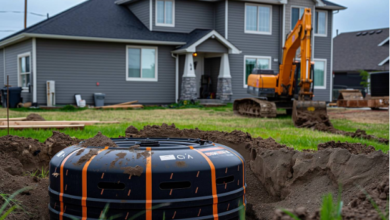The Benefits of Using Used Horse Jumps

Horse jumps are a critical piece of equestrian equipment that helps riders practice and train. They come in various shapes and sizes and can be made from wood or plastic.
However, a vinyl jump requires ugly sandbags; they blow over in moderate winds and are not fixable when they break. The best option for your training facility is a set of wooden jumps.
Durability
Unlike traditional wooden jumps, plastic ones do not warp or rot from weather conditions. They also resist the force of a horse jumping over them and can withstand multiple uses.
Moreover, they do not splinter or break, ensuring the horse’s safety. In addition, they are easy to set up and store, making them an excellent choice for riders with limited training space.
Plastic jumps come in a variety of sizes and designs. They can be used as a simple vertical or an oxer, a combination jump with a ditch, and a solid fence. They can also be used as a Normandy bank, a type of jump seen on cross-country courses that require the rider to clear both standards. In addition to these jumps, they can be used as gridwork, an obstacle that improves a horse’s footwork.
Easy to set up and store
Whether you are a professional show jumper or just learning to ride, the quality of your training equipment is crucial. It must be safe for you and your horse, durable, and easy to set up and store. One excellent option is the plastic horse jumps line; you can look for it at used horse jumps for sale. These are made from molded High-Density Polyethylene. This material is solid and durable. It also features metal encapsulated inside gates and standards, further strengthening them. It is also easy to clean and resists joints and structural failure stress.
The plastic jump cups are designed in several shapes and sizes to create different jumping exercises. They can be stacked to form vertical and oxer-type jumps. They also come in a variety of depths. Shallower cups, commonly used in hunter fences, allow for more accessible rail falls. Some are even reversible to create a flat cup. These safety improvements make plastic jumps much safer than steel jump cups, which can cause lacerations if the rider falls on them.
Versatility
Many plastic show jumps can be used as ground poles or cavalletti, allowing trainers to create a variety of training exercises. They are also lightweight, making them easy to handle and transport.
Aside from jumps, riders need various other horse jumping equipment, including stirrup leathers and irons. These tools ensure the rider’s stability, balance, and support while riding. They also protect the rider from blisters and calluses.
One of the most important pieces of horse jumping equipment is the filler at the lowest part of the jump. This element helps the horse judge heights and widths when negotiating the leap. A filler can be anything from more rails to a gate or flower box. A filler helps the rider avoid a difficult “airy” jump, which can be dangerous for both the rider and the horse. It also helps the rider practice calculating distances.
Eco-friendliness
As awareness of the environment grows, many horse owners seek ways to minimize their impact. One of the easiest ways to do this is by purchasing sustainable equestrian equipment. This is particularly important for jumps because they are often used extensively and can easily create permanent ruts in the ground that require expensive repairs.
For example, using tree limbs as jump standards is fine as long as they are thick enough not to puncture or scrape your horse as he leaps over them. It’s also acceptable to create a brush fence out of bales, as long as the foliage is light enough that it won’t injure him if he hits it.
Other eco-friendly options for jumps include white plastic Bloks or Stackers, which are formed to allow pole ends to rest on the shorter side of the block. Using these instead of wood jumps can save you money and reduce the need to chop down trees, which causes deforestation and environmental degradation.




